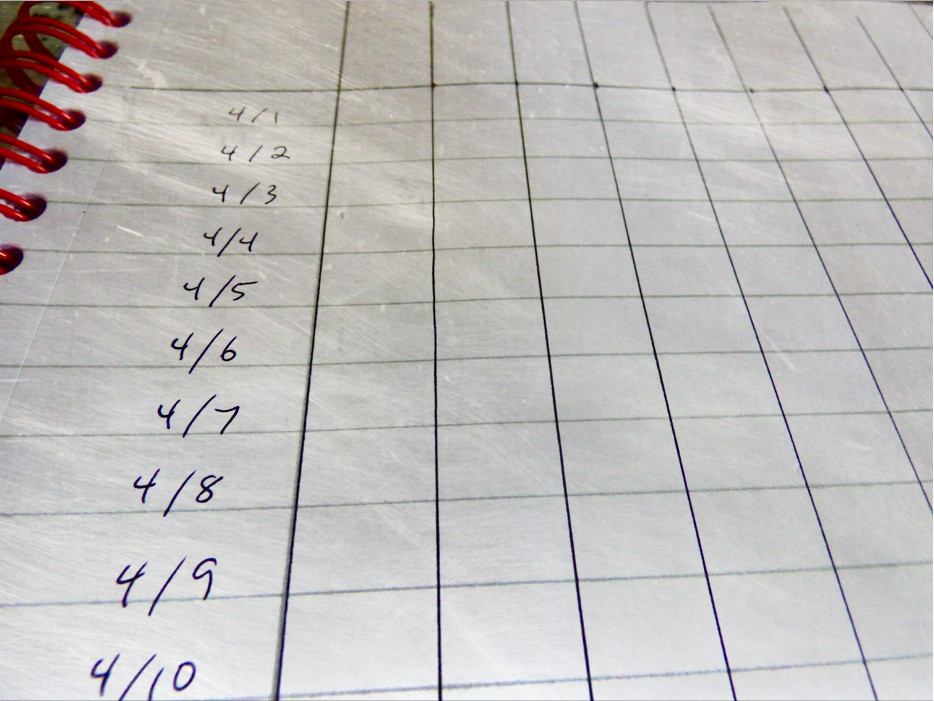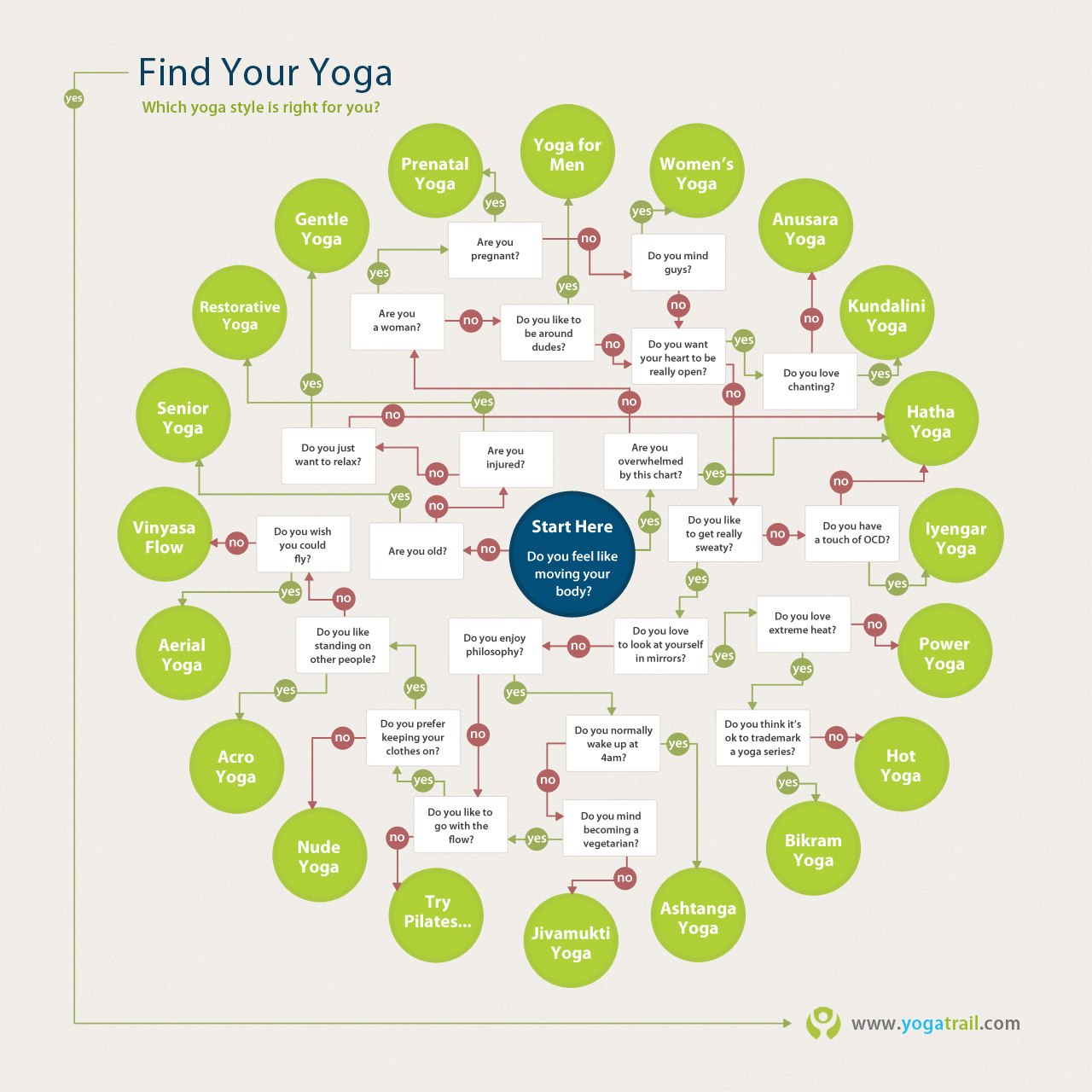A Personal Yoga practice gives you the freedom to practice anytime, anywhere. Practicing at home sounds easy enough but it can take years to cultivate your own intuitive, organic practice.
Needless to say, it can be challenging to self-direct your own practice. Having too many choices can feel overwhelming. Without a clear road map you might start avoiding your mat altogether.
When I feel overwhelmed I get organized. I keep a wire-bound notebook on my desk at all times.
I love making lists. All kinds. Grocery lists, “To Do” lists, long-term goal lists, project lists, etc. I love the satisfaction of crossing things off and throwing lists away. I keep the best lists.
Six months ago I started developing my first Personal Yoga training chart (feel free to expand upon it). This organizational tool played an essential role in my recovery from a herniated disk.
Create your own Personal Yoga Training Chart
Step 1: Free Writing
Start by free writing a page of notes. Write continuously until you fill the page. Don’t worry about spelling, punctuation, grammar, etc. Write about your goals. Write about any challenges you might be having with your home practice. It’s okay to go off topic, just keep writing.
Step 2: Movement Vocabulary
On a fresh sheet of paper make a list (!) of exercises. Think about your movement vocabulary. Which exercises will help you reach your goals? What do you enjoy doing?
[The key word here is: Enjoy. One pitfall to avoid is too much structure. Too many have-to’s. Not enough want-to’s.]
How do you want to move?
The level of challenge is up to you. You could include one or two exercises that you don’t necessarily enjoy but would be good for you. For the most part include exercises that you genuinely enjoy.
Step 3: Training Chart
On a third sheet of paper make a chart. On the left side of the page list all of the dates for the next month. Across the top of the page create columns for each exercise that you listed in Step 2.
The number of exercises is up to you. I recommend anywhere from 3-12. Your personal practice can be as simple or as challenging as you want to be. The idea is to pick exercises that you can see yourself doing on a day-to-day basis.
Tracking your daily progress is very satisfying. And a training chart provides you with a record of your efforts over time.
Off Days
Gaps in your training schedule are okay! It’s bound to happen at some point. Life gets busy or takes an unexpected turn. Be kind to yourself on your off days. Trust that you’ll get back on track as soon as possible.
Could you use a little help with with your budding home practice? I’d love to hear about your goals. Book a free no-obligation consultation today.
If you enjoyed this article you might also like:





